Year 3
The English curriculum is built around the three interrelated strands of language, literature and literacy. Teaching and learning programs should balance and integrate all three strands. Together, the strands focus on developing students' knowledge, understanding and skills in listening, reading, viewing, speaking, writing and creating. Learning in English builds on concepts, skills and processes developed in earlier years, and teachers will revisit and strengthen these as needed.
In Years 3 and 4, students experience learning in familiar contexts and a range of contexts that relate to study in other areas of the curriculum. They interact with peers and teachers from other classes and schools in a range of face-to-face and online/virtual environments.
Students engage with a variety of texts for enjoyment. They listen to, read, view and interpret spoken, written and multimodal texts in which the primary purpose is aesthetic, as well as texts designed to inform and persuade. These encompass traditional oral texts including Aboriginal stories, picture books, various types of print and digital texts, simple chapter books, rhyming verse, poetry, non-fiction, film, multimodal texts, dramatic performances and texts used by students as models for constructing their own work.
The range of literary texts for Foundation to Year 10 comprises Australian literature, including the oral narrative traditions of Aboriginal and Torres Strait Islander Peoples, as well as the contemporary literature of these two cultural groups, and classic and contemporary world literature, including texts from and about Asia.
Literary texts that support and extend students in Years 3 and 4 as independent readers describe complex sequences of events that extend over several pages and involve unusual happenings within a framework of familiar experiences. Informative texts include content of increasing complexity and technicality about topics of interest and topics being studied in other areas of the curriculum. These texts use complex language features, including varied sentence structures, some unfamiliar vocabulary, a significant number of high-frequency sight words and words that need to be decoded phonically, and a variety of punctuation conventions, as well as illustrations and diagrams that support and extend the printed text.
Students create a range of imaginative, informative and persuasive types of texts including narratives, procedures, performances, reports, reviews, poetry and expositions.
(source: www.australiancurriculum.edu.au)
Achievement Standard
Receptive modes (listening, reading and viewing)
By the end of Year 3, students understand how content can be organised using different text structures depending on the purpose of the text. They understand how language features, images and vocabulary choices are used for different effects.
They read texts that contain varied sentence structures, a range of punctuation conventions, and images that provide extra information. They use phonics and word knowledge to fluently read more complex words. They identify literal and implied meaning connecting ideas in different parts of a text. They select information, ideas and events in texts that relate to their own lives and to other texts. They listen to others' views and respond appropriately using interaction skills.
Productive modes (speaking, writing and creating)
Students understand how language features are used to link and sequence ideas. They understand how language can be used to express feelings and opinions on topics. Their texts include writing and images to express and develop, in some detail, experiences, events, information, ideas and characters.
Students create a range of texts for familiar and unfamiliar audiences. They contribute actively to class and group discussions, asking questions, providing useful feedback and making presentations. They demonstrate understanding of grammar and choose vocabulary and punctuation appropriate to the purpose and context of their writing. They use knowledge of letter-sound relationships including consonant and vowel clusters and high-frequency words to spell words accurately. They re-read and edit their writing, checking their work for appropriate vocabulary, structure and meaning. They write using joined letters that are accurately formed and consistent in size.
(source: www.australiancurriculum.edu.au)
- Free Plan

Colour Me Carefully – Geometric Animals – Worksheets
A set of four colouring pages to be used as speaking and listening activities.
- Plus Plan

Write a Diamante Poem Worksheet
Set your students up for success when writing a diamante poem with this set of scaffolded, easy-to-follow worksheets.
- Plus Plan

Suffix -Able - Grammar Worksheet
Transform your students’ vocabulary skills with our skill-building English worksheets, featuring the powerful “-able” suffix
- Plus Plan

Compare and Contrast - Venn Diagram Template
A template to use when teaching students how to compare and contrast.
- Plus Plan

Introduction to Personal Recounts PowerPoint
An 18 slide editable PowerPoint template to use when teaching younger students about the structure and language features of personal recounts.
- Plus Plan

Readers' Theatre Script - Three Little Pigs
A script which can be used during readers' theatre or Drama sessions, aimed at students 6 years and over.
- Plus Plan

Topic Sentence Starter Cards
A pack of 32 narrative, persuasive and report writing sentence starter cards.
- Plus Plan

Comprehension Task Cards - Understand Sequence
A set of comprehension task cards to help students understand sequence when reading.
- Free Plan

Persuasive Text Planning Template (Using OREO)
A planning template for students to use when writing a persuasive text.
- Plus Plan
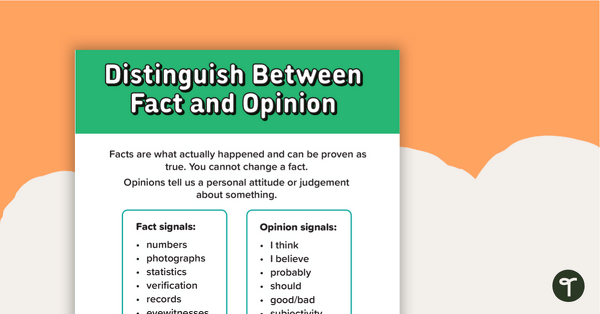
Distinguish Between Fact and Opinion Poster
A poster highlighting how to distinguish between fact and opinion when reading a piece of text.
- Plus Plan
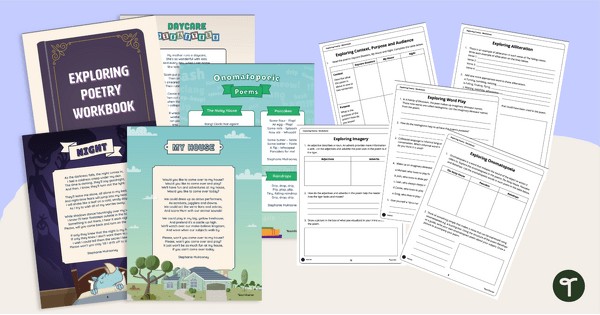
Exploring Poetry Workbook
A workbook to help students become more familiar with the genre of poetry.
- Plus Plan

NAPLAN-Style Assessment Rubric - Informative Writing
A NAPLAN-style rubric designed to help teachers to assess students' informative writing.
- Plus Plan

5 Procedural Writing Prompts
Use this set of 5 procedural writing prompts to assess your students’ procedural writing skills.
- Plus Plan

Year 4 Weekly Spelling Homework Worksheets
Print your own Year 4 Spelling Homework sheets with 36 weeks of printable, phonics-based spelling worksheets.
- Free Plan

Our Solar System Cloze Worksheet
Our Solar System cloze worksheet for your students to complete.
- Plus Plan
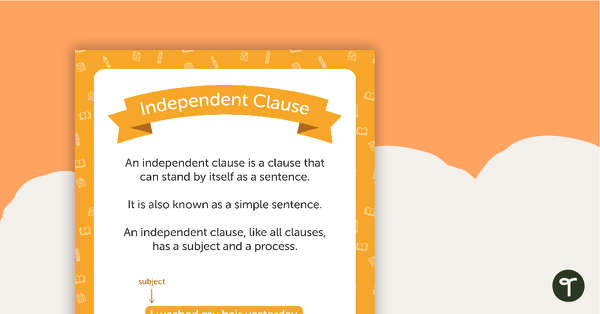
Types of Clauses Posters
A set of five posters examining the structure of independent and dependent clauses.
- Free Plan

Paragraphs in Narrative Writing Poster
A poster explaining how to write paragraphs in narrative texts.
- Plus Plan

Grammar Word Search with Solution
A word search to help your students learn a variety of grammatical terms.
- Plus Plan

Introduction to Narrative Features PowerPoint - Year 3 and Year 4
A 23 slide editable PowerPoint template to use when teaching your students about the features of narrative texts.
- Plus Plan

Paragraph of the Week PowerPoint - Imaginative Paragraphs
A Paragraph of the Week PowerPoint presentation to use when setting up this writing strategy in your classroom.
- Plus Plan

The Egyptian Pyramids - Comprehension Task
A 2 page comprehension task for students to use in the classroom when learning about the Egyptian pyramids.
- Plus Plan

Fiction and Non-Fiction Cloze Activities
A set of 7 fiction and non-fiction cloze worksheets with answer sheets.
- Plus Plan

Comparing Narrative and Informational Text Worksheets
Use this set of comparing narrative and informational text worksheets to examine the purpose and features of these two common genres.
- Plus Plan
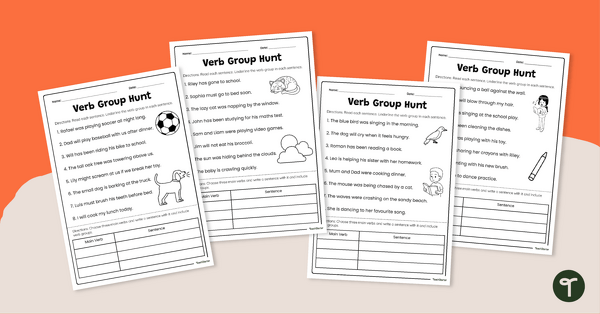
Verb Group Hunt Worksheet Pack
Explore verb groups with your students using this verb group hunt worksheet pack.
- Plus Plan

Informative Paragraph Topic Sentence Starters - Interactive Slides
Build your students’ writing skills with a set of digital informative paragraph writing prompts.
- Plus Plan

Animal Information Report – Writing Craftivity
Use this animal-themed writing and craft activity to teach your early years students about informative writing.
- Plus Plan

Using Punctuation Marks PowerPoint
Teach the correct usage of punctuation marks with an interactive Punctuation PowerPoint for upper years students.
- Plus Plan
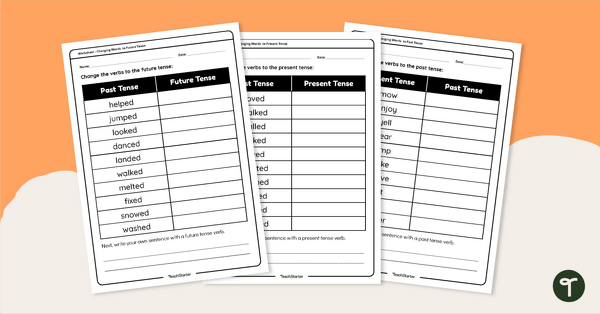
Past, Present and Future Tense Worksheets
Provide students with additional verb tense practise with worksheets focusing on changing verbs into past, present and future tense.
- Free Plan

Verb Tense Worksheet
Provide students with additional verb tense practice with a past, present, and future tense worksheet.
- Plus Plan

Commonly Used Verbs Flashcards
Teach commonly used verbs with this set of printable flashcards.
- Plus Plan

Story Ideas – Character, Setting, and Complication Cards
Help your students choose a topic to write about with this set of 36 character, setting and compilation task cards.
- Plus Plan

Strong Verbs Teaching Slides
Discover how to use strong verbs in sentences with this set of teaching slides.